
Socal Beekeeping
Harvesting Honey
3/9/2016
Michael Henderson
[This is an event that happened before I started keeping the blog. But since I have pictures, I'll post it.]
My friend, JT, came by to help me harvest some of the honey from my hive. Judy took a few pictures of us. This was one of the first extractions I did and it's pretty messy - look at all the bees flying. And JT was standing in front of the hive and got bees all over his back. I've gotten better at working a hive since this episode.
Here's a before picture - just dressing for the work.

Getting the smoker going.

Smoking the bees. I had already smoked the entrance.
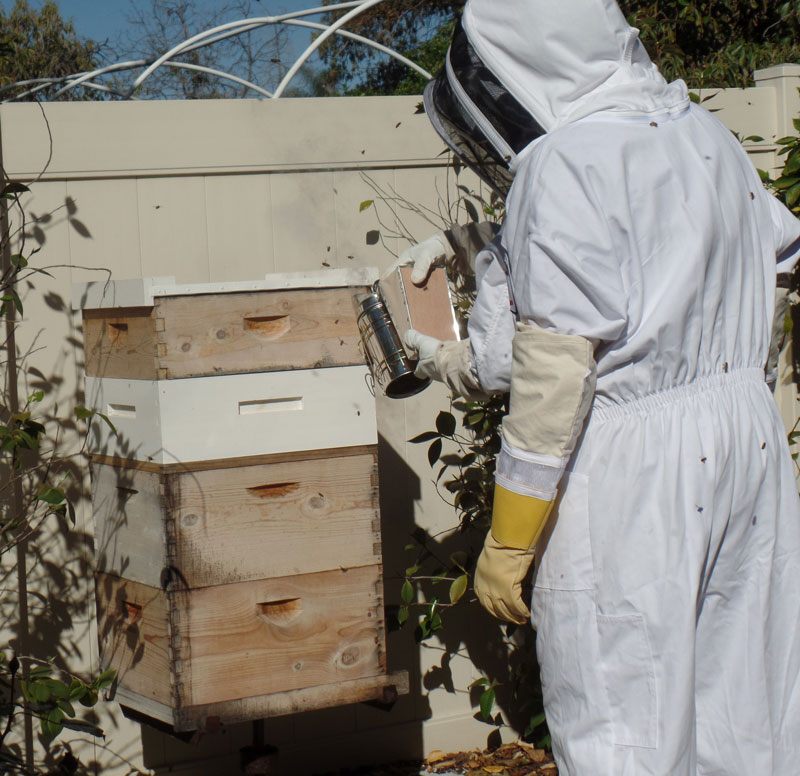
Taking the top off. Note that the top super is not painted. I'm going to replace that section and clean and paint it.

Here's one of the frames we're going to take.

And another frame of honey. This one is not fully capped on this side but it was on the other so I decided to take it anyway.
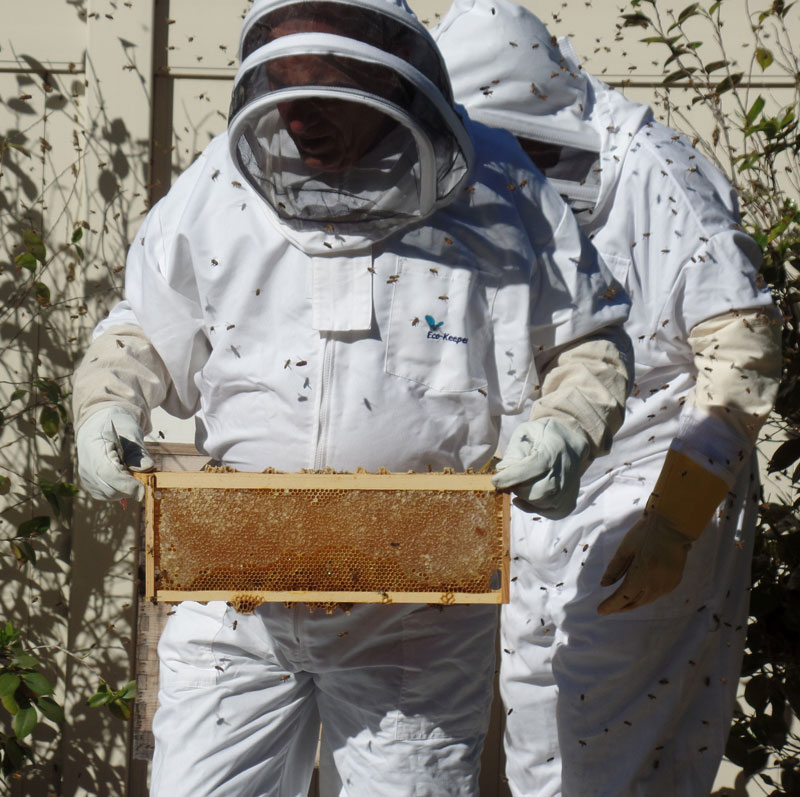
Putting the full frames of honey in a tub. We won't do the extraction until Friday so I need to keep the honey covered or the bees will discover it and attempt to carry it back to the hive. Getting the bees off the frames is a challenge.

Here we're putting everything back together. Note that I've replaced the top super with a new section that I made and painted. The bees seem to like JT - they're congregating on his back. Actually, the reason the bees are on his back is that he's standing at the entrance of the hive, in essence sort of blocking the ability of the bees to return to the hive.

Checking the honey tub and trying to get most of the bees out of it. The bees are still on JT's back. I brushed them off shortly after this picture was taken.
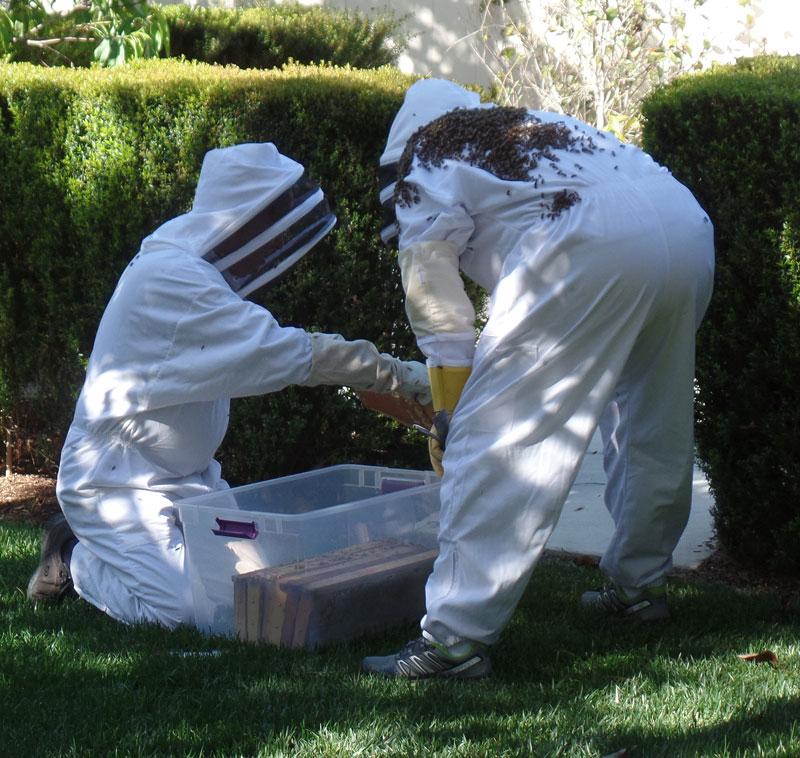
Brushing off the bees so that we could get out of the bee suits was a challenge. Both JT and I got stung after we stripped off our bee suits even though we were quite a distance from the hive.
The hive went back to "normal" within 15 minutes but the bees will be upset for a day or so. I'll just give them a wide berth until then. They're actually a pretty docile hive. Note that I switched out the unpainted super for one I had made and painted. I changed the way I make the handholds. The bottom super was the first I made - you can see the square hand hold.

And here's what we got - seven frames of honey from the two supers. There's still lots of honey in the hive and the flow is just starting so the hive will be in fine shape and will have room to expand.
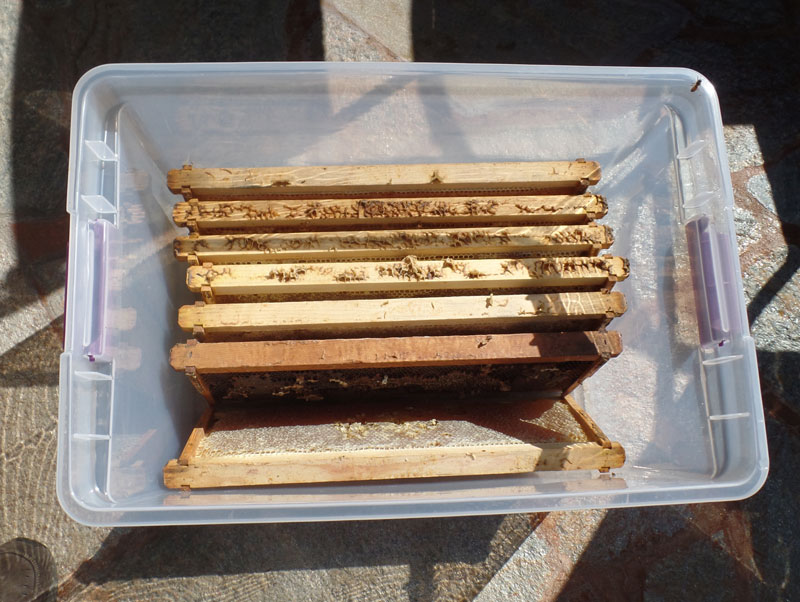
A few days later, we took the frames to a beekeeper friend of mine, Janet Andrews who owns Backyard Bees. Janet and I exchange services - I do woodwork for her and she processes my honey.
Here's JT and Janet in Janet's honey processing facility. JT is doing some decapping in this picture, and Janet is to the right. Behind JT is the "extractor" which is a slow speed centrifuge. After the caps are taken off of the comb, the frames are placed in the extractor and are spun to get the honey out of the comb. This leaves empty comb in the frames, and these frames are then put back into the hive for the bees to use. Making beeswax is an energy intensive task for the bees so giving the comb back to them allows them to focus on making honey instead of wax.

Here's a better picture of JT getting ready to decap a frame.

A frame partially decapped. JT is holding the decapping tool. Janet will take the wax that we remove and process it into beeswax products.

Janet is getting the extractor ready to spin the frames.
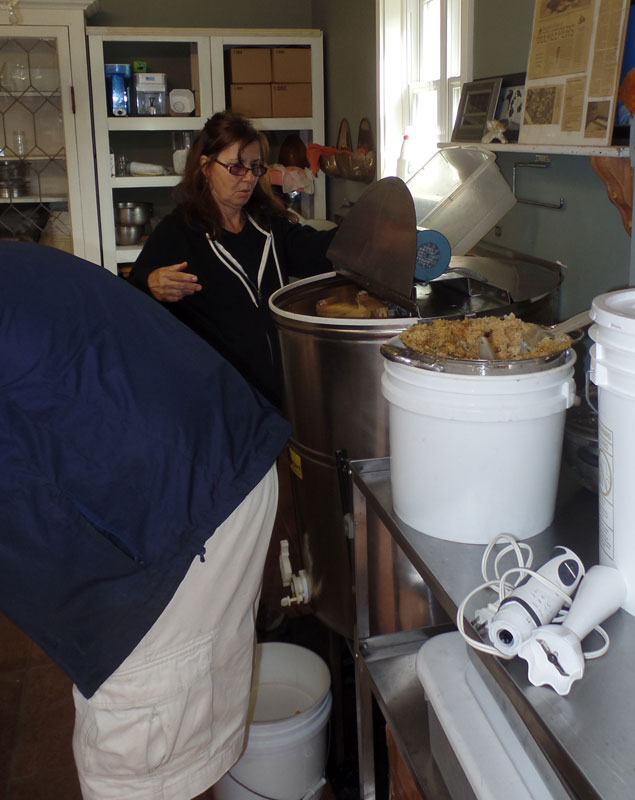
After spinning for a few minutes, the honey begins to flow from the extractor. Although it's a bit hard to see, there's a screen filter in the top of the bucket. When we decapped the comb, there were small pieces of caps left on the comb. Those fragments are spun off with the honey. They don't hurt anything - it would be perfectly safe to eat those pieces of wax - but clear honey looks better. You can see the wax fragments in the honey in this picture.
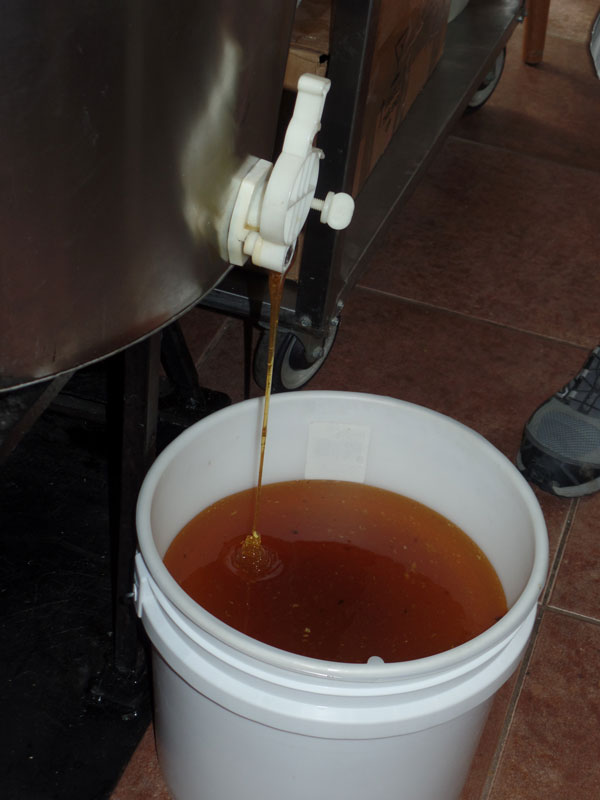
And that was it. Here's the honey we brought home.

The next step is to return the frames to the hive and I'll do that in a couple of days. Rain is predicted for the next couple of days so I'll wait for a clear day to do it.
So what do we do with the honey? Well, we eat some of it but there's too much for our use so we use it to create "good will". For example, our postmistress loves honey so she always gets a jar every couple of months - I never have any problems at the post office!
Of course, friends get a jar when we harvest.